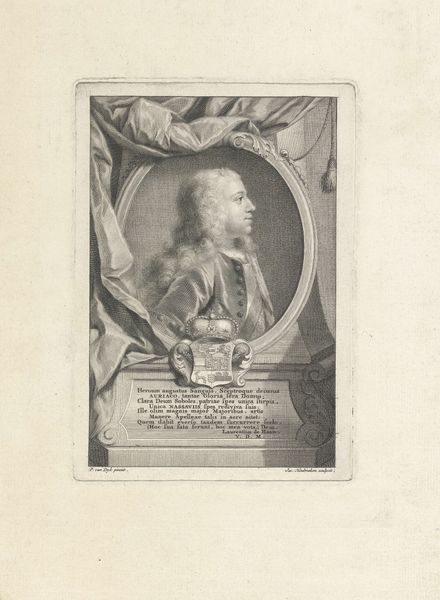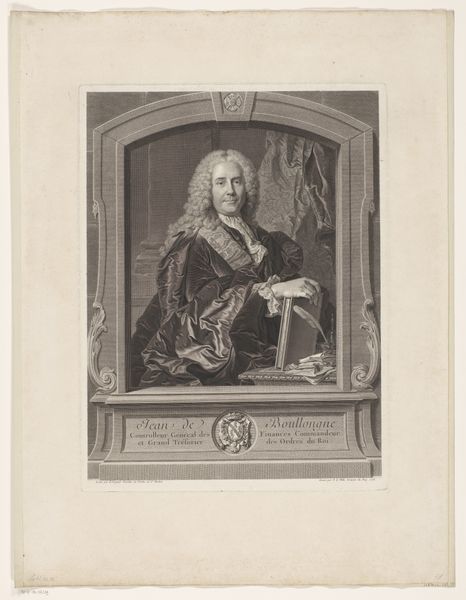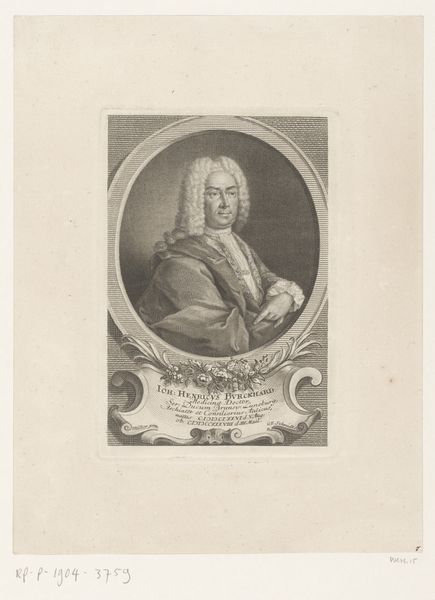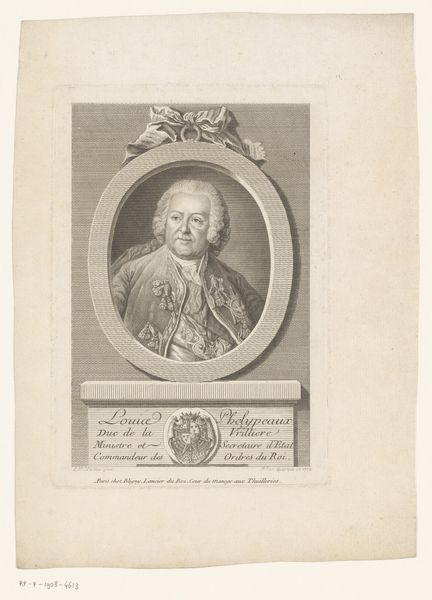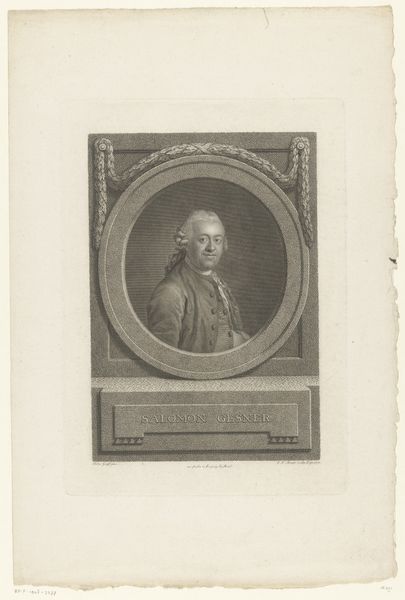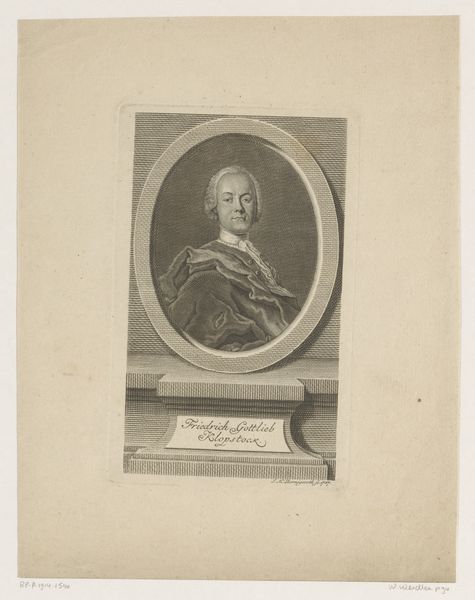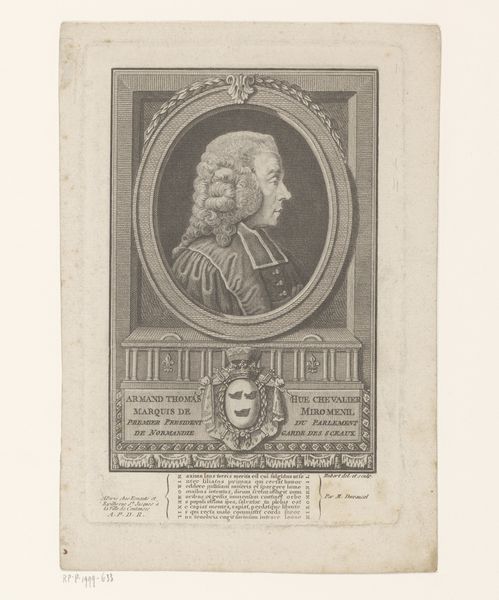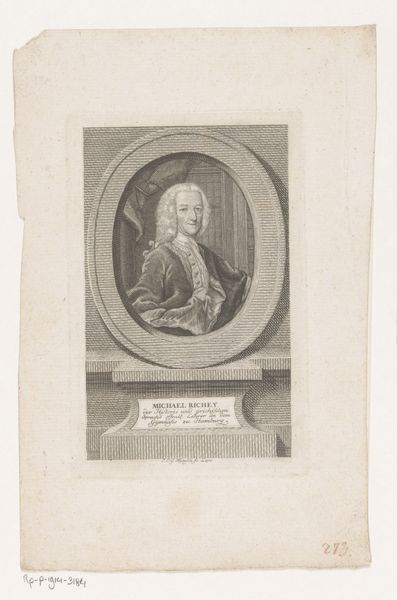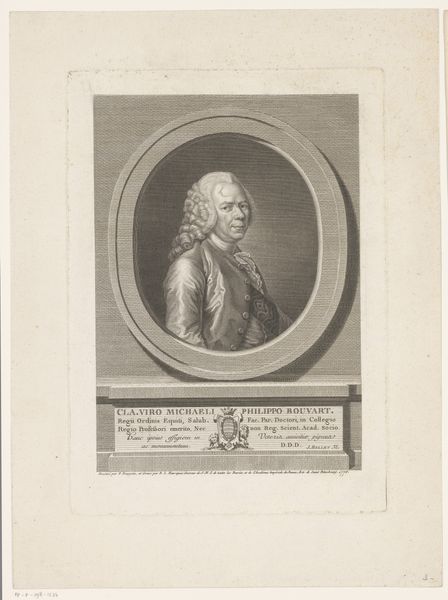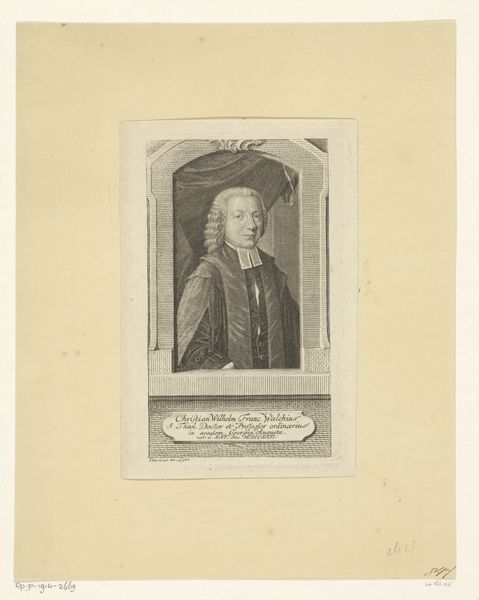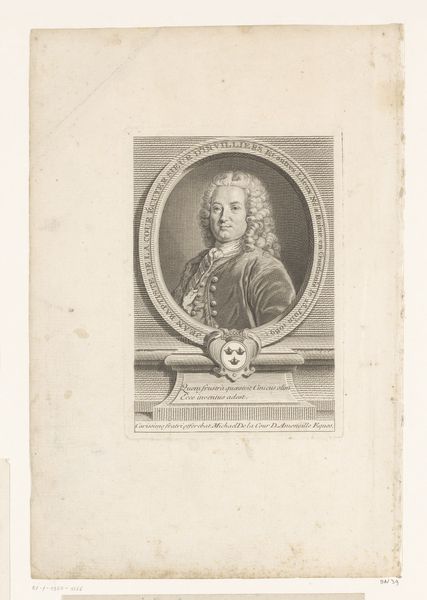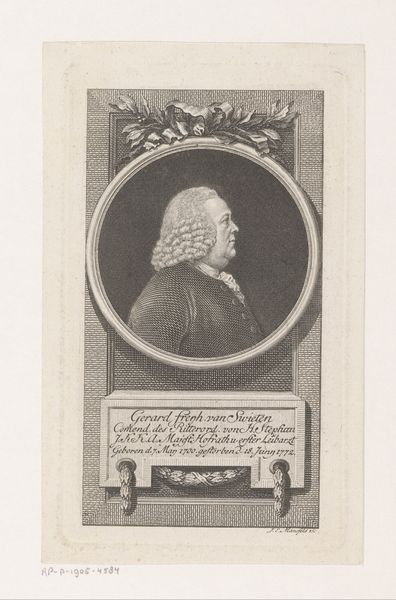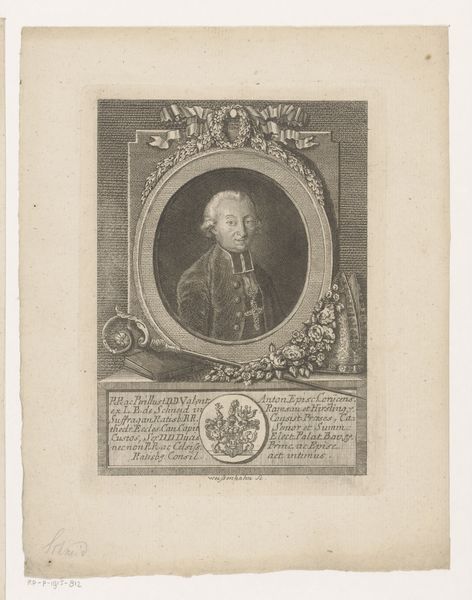
print, engraving
#
portrait
#
neoclacissism
# print
#
old engraving style
#
figuration
#
form
#
line
#
history-painting
#
engraving
Dimensions: height 175 mm, width 117 mm
Copyright: Rijks Museum: Open Domain
Curator: Here we have Etienne Ficquet's 1763 engraving, "Portret van Jean-Baptiste Rousseau," held in the Rijksmuseum collection. Editor: It strikes me as formal, even austere, despite the flourishes of the decorative frame. The lines are incredibly precise, rendering Rousseau in a very... controlled light. Curator: Indeed. The choice of engraving lends itself to the Neoclassical emphasis on line and clarity. Note how Ficquet uses the medium to create subtle gradations in tone to convey the volume of Rousseau’s face. The surrounding frame feels heavily symbolic, though. Editor: Definitely. It looks less like an embellishment and more like a constructed reality imposed upon the subject. Is there something significant about Rousseau’s image being presented in this structured format? Does this speak to how figures were promoted or controlled through artistic representation during that period? Curator: Perhaps. Remember, too, that laurel wreaths usually signify accomplishment and status. His pose and gaze are quite self-assured, verging on smug, even. It projects an air of intellectual authority. Lion heads frame his name. This would signal both power and poetic inspiration to a learned viewer. Editor: Poetic authority, granted, but also a reminder that access to such representation was still highly unequal. A controlled image also means control over the narrative and legacy. What are we not seeing? Who isn’t being memorialized in this manner? Curator: Good questions, all. Considering the date, right on the cusp of great social and political upheaval in Europe, maybe such carefully constructed imagery reflects an elite trying to maintain order – visual order and social order, for sure. Editor: Precisely. It prompts me to consider the politics embedded within the image itself and question the intentions behind its creation and reception in its time. The print’s clarity feels deliberately imposed and maintained. Curator: Thinking about those political angles brings a layer of understanding to the portraiture traditions that might be overlooked. I have gained a bit of a sharper awareness for the image as well, thank you. Editor: My pleasure! This framework offers avenues for thinking more deeply about how class and representation connect even within what seems to be such a contained portrait.
Comments
No comments
Be the first to comment and join the conversation on the ultimate creative platform.
